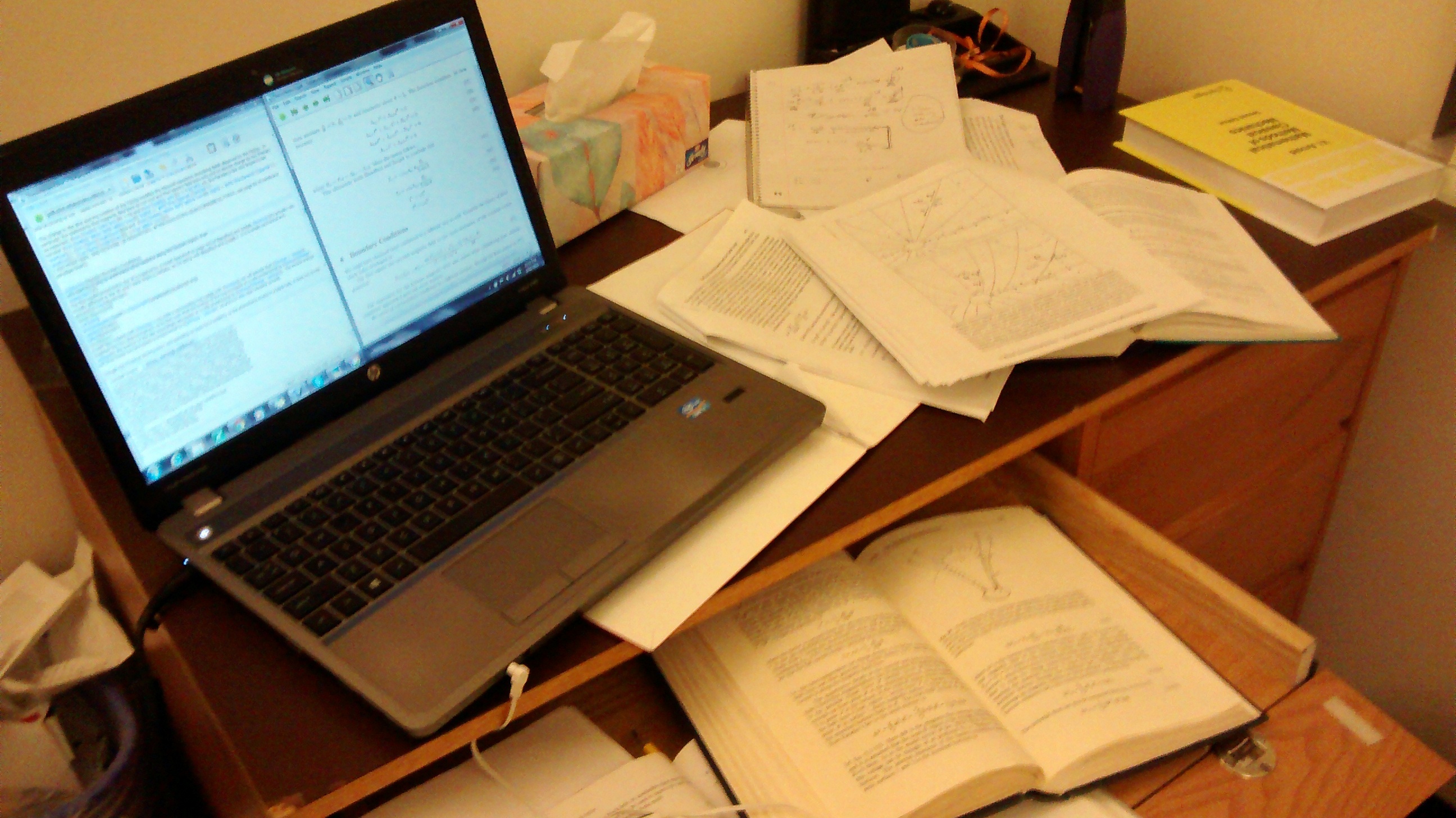Since I'm a senior this year, I'm spending a lot of time working on a thesis. The exact form of the thesis and the time frame in which students complete it vary a lot between departments, but in physics the process starts in the summer before senior year when students decide what topic they want to work on; whether they want to do computational, theoretical, or experimental physics; and who they want to advise them. For me, this final choice determined all the others. I had enjoyed working on one of my junior papers (mini-theses completed during junior year) with Herman Verlinde, so I wanted to do my thesis with him as well. Professor Verlinde wanted to continue developing some of his old notes about the theory of energy extraction from black holes, and suggested I do my thesis on that. I agreed!

So I am now very deep in a study of processes like the one in the above photo. It turns out that black holes can have large jets of energy spewing out from their poles. Where exactly this energy comes from is a complicated question that isn't entirely understood. One of the likely explanations is the Blandford-Znajek process. You can understand a little bit about this process by considering a disc (the grey object below) surrounded by a ring (the white object). Imagine the disc rotates with a speed Ω, while the ring rotates with a slower speed ω<Ω. The two objects will rub against each other, and the disc will slow down while the ring speeds up. Also, energy will be released as heat, since the objects are rubbing against each other. Remember what happens when you rub your hands together in the cold?

What happens around black holes is sort of similar: The heat released by the two objects is in some ways analogous to the energy shooting out in the jets at the poles of the black holes. But instead of two rotating objects, the black hole situation involves magnetic fields running through a plasma "rubbing" on a spinning black hole. And the black hole version is a lot more complicated!
This way of extracting energy from black holes has been an active area of research since the 1970s, but many of the studies have used computation to simulate the behavior of the fields involved. Professor Verlinde and I want to offer an explanation that is as analytic as possible. We want to try to say as much as possible about what happens around black holes by just using equations that can be solved by hand. (If you have a strong physics background and want to check out some recent work in this area, look here.) In addition, we hope to produce a thesis that provides an intuitive physical picture that is as clear and elegant as possible.

For me, right now, this means a lot of late nights spent with piles of papers and books and lots of long discussions with Professor Verlinde in which we both try to understand what's going on around black holes and how we can explain it well. Although I'm often frustrated by how little I understand, my grasp of the physics involved is definitely growing. I'm cautiously optimistic about how my thesis will turn out!






